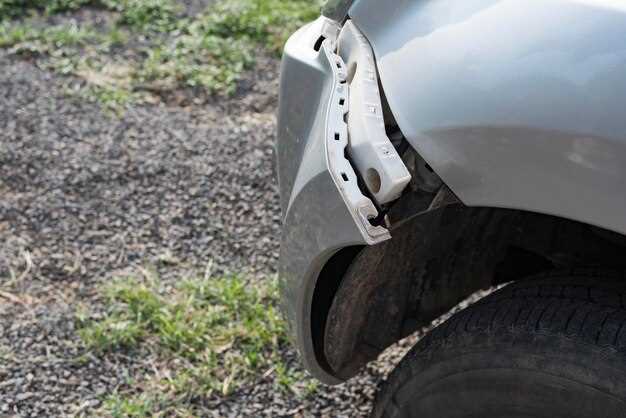What is a Jeep track bar and why it matters


When it comes to off-road driving, maintaining proper vehicle handling and stability is crucial. The track bar, also known as a sway bar, plays a significant role in achieving this balance. This essential component connects the vehicle’s axle to the frame, ensuring that the wheels remain aligned and reducing body roll during cornering or off-road maneuvers. Understanding the function of the track bar is vital for Jeep enthusiasts who wish to optimize their vehicle’s performance.
The importance of a well-functioning track bar cannot be overstated. A damaged or worn track bar can lead to steering instability, causing unpredictable handling and a less enjoyable driving experience. In extreme cases, neglecting the condition of the track bar may result in serious safety risks. Therefore, regular inspection and maintenance of this component are essential for ensuring both safety and performance, especially for those who tackle challenging terrains.
Moreover, upgrading the track bar can significantly enhance your Jeep’s overall handling characteristics. Many aftermarket options are designed to improve articulation and adjustability, allowing drivers to achieve better control and stability. Whether you are navigating rocky trails or tackling mud pits, a high-quality track bar is an investment that pays off in terms of improved vehicle dynamics and driver confidence.
How Track Bars Influence Steering Stability in Jeeps

Track bars play a crucial role in maintaining steering stability in Jeeps, particularly when navigating rough terrain or during off-road adventures. These components are designed to prevent lateral movement of the axle, ensuring that the wheels remain aligned with the vehicle’s intended path. When a track bar is properly installed and functioning, it helps maintain the correct geometry of the suspension system.
One of the primary functions of a track bar is to minimize body roll and enhance vehicle control. This is especially important in Jeep models, which are often subjected to challenging driving conditions. A well-maintained track bar reduces unwanted sway, allowing for more precise steering responses, which translates into improved safety and handling.
Moreover, when Jeeps are lifted or modified for increased off-road capabilities, track bars become even more essential. Elevated suspensions can alter the vehicle’s center of gravity, making it more susceptible to instability. Upgrading or adjusting the track bar ensures that the axle remains centered beneath the body, contributing to better weight distribution and more consistent steering performance.
Additionally, worn or damaged track bars can lead to a phenomenon known as “death wobble,” where vibrations in the steering wheel occur at certain speeds or on uneven surfaces, severely affecting driving confidence. Regular inspections and maintenance of the track bar are crucial to preserving steering stability and overall vehicle performance. Keeping track bars in optimal condition ensures that Jeeps maintain their legendary capability and reliability, especially in off-road environments.
Identifying Signs of a Damaged Track Bar and Its Impact on Performance
A track bar is a crucial component of your vehicle’s suspension system, helping to maintain proper axle alignment and handling. Identifying signs of a damaged track bar is essential for ensuring optimal vehicle performance and safety on the road.
One of the most noticeable indicators of a failing track bar is a change in steering responsiveness. When the track bar is damaged, you may experience increased play in the steering wheel, making it difficult to maintain control of the vehicle, especially during turns. This lack of precision can lead to unsafe driving conditions.
Another sign to look for is abnormal tire wear. A damaged track bar can cause misalignment of the axle, leading to uneven tire wear patterns. If you notice significant wear on one side of the tires or a cupping effect, it may be time to inspect the track bar for damages.
Additionally, listen for unusual noises when driving over bumps or uneven surfaces. A damaged track bar can produce clunking or rattling sounds, indicating that the bar or its mounting points are compromised. Paying attention to these noises can help you catch problems early on.
Lastly, if you experience excessive body roll or swaying while driving, it may be a result of a faulty track bar. This condition can severely affect the vehicle’s stability, especially during cornering or maneuvering. Regular inspection and maintenance of the track bar can help prevent these issues and enhance overall vehicle performance.
Step-by-Step Guide to Replacing a Track Bar in Your Jeep

Replacing a track bar is essential for maintaining your Jeep’s steering stability and overall handling. Follow these steps to ensure a successful replacement.
Step 1: Gather Necessary Tools and Materials
You will need a new track bar, appropriate wrenches, a socket set, a torque wrench, and possibly a ball joint separator. Having a jack and jack stands will also be essential to lift your Jeep securely.
Step 2: Prepare Your Jeep
Park your Jeep on a level surface and engage the parking brake. Loosen the lug nuts on the front wheels but do not remove them completely yet. Use a jack to lift the front of your vehicle and secure it with jack stands for safety.
Step 3: Remove the Front Wheels
Completely unscrew the lug nuts and remove the front wheels to access the suspension components effectively.
Step 4: Locate the Track Bar
Identify the track bar, which runs from the axle to the frame of your Jeep. It typically connects to the axle on one end and the frame on the other, helping to keep the axle aligned during steering maneuvers.
Step 5: Disconnect the Old Track Bar
Using your wrench, loosen and remove the bolts securing the track bar at both ends. If the bolts are difficult to remove, you may need to use a ball joint separator to assist in disconnecting the bar.
Step 6: Compare the New Track Bar
Before installation, compare the old track bar with the new one to ensure they are the same length and configuration. This is essential for proper alignment and steering performance.
Step 7: Install the New Track Bar
Position the new track bar in place. Secure it first to the axle, then attach it to the frame. Ensure that the bar is oriented correctly, as it plays a crucial role in steering dynamics.
Step 8: Torque the Bolts
Using a torque wrench, tighten the bolts to the manufacturer’s specifications. This step is vital for ensuring that the track bar is securely attached and can withstand the driving conditions.
Step 9: Reinstall the Front Wheels
With the track bar in place and secured, put the front wheels back on. Hand-tighten the lug nuts before lowering the Jeep back to the ground.
Step 10: Lower Your Jeep and Final Check
Remove the jack stands and lower your Jeep. Once it is back on the ground, use the torque wrench once more to double-check the lug nuts on the wheels. Take your Jeep for a brief test drive to ensure everything is functioning correctly.
This guide should help you replace your Jeep’s track bar effectively. Always consult your vehicle’s manual for specific details related to your model and follow safety precautions during the entire process.
